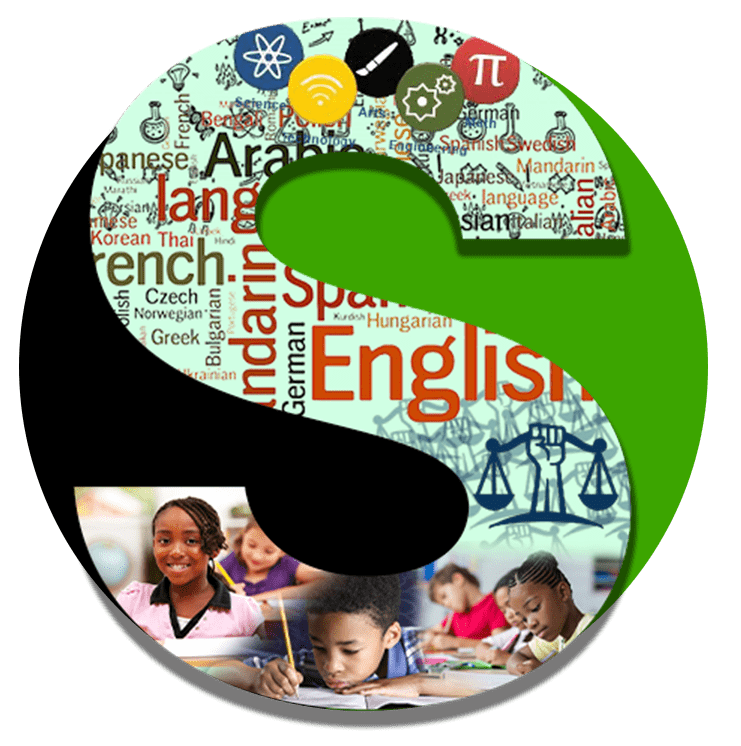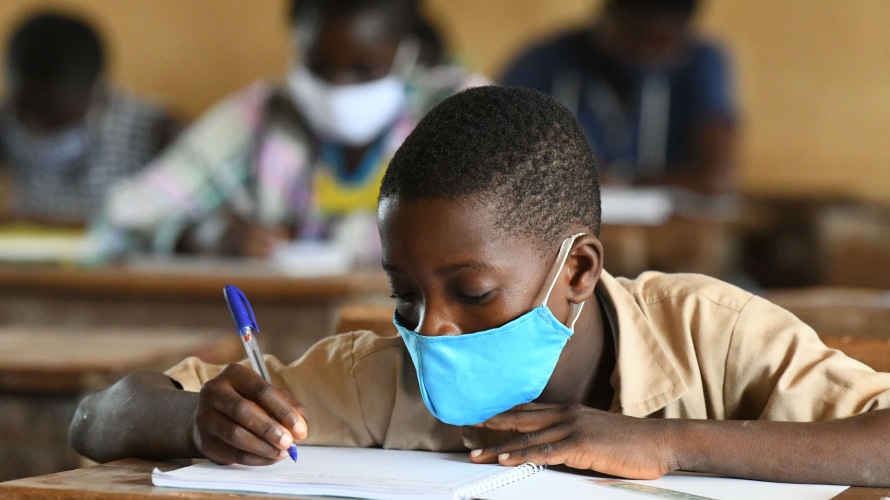The global pandemic has had a significant impact on the education system across the United States. It is important to acknowledge the extent to which students from all backgrounds, including students of color, Caucasian students, Asian students, and those from both suburban and rural areas, have fallen behind academically. Underserved minorities have been disproportionately affected by these circumstances (Kuhfeld et al., 2020; Engberg et al., 2014). However, there has been a lack of transparency and acknowledgment regarding the true extent of the problem. Here we will address the urgency of this matter and emphasize the need to establish realistic goals and expectations to ensure that students catch up. Additionally, we will examine the consequences of avoiding the truth and lowering educational standards, both for individual students and society as a whole.
The Cost of Mandatory School Closures
The closure of schools due to the pandemic has resulted in severe learning loss for students across the nation. Unfortunately, there has been a tendency to ignore or downplay the extent of this setback. This failure to acknowledge the problem exacerbates the situation rather than resolving it. Lowering educational standards to maintain enrollment numbers and financial stability within universities is particularly problematic. By doing so, institutions are detracting from the recognized standards that were once their hallmark. These actions conceal the true severity of the situation and can have far-reaching consequences.
The widespread school closures due to the COVID-19 pandemic have ignited concerns about potential learning losses and the overall effect on student achievement (Kuhfeld et al., 2020). Several studies have delved into this issue, shedding light on the significant disruption in education provision that has led to fears of learning losses (Kuhfeld et al., 2020; Engberg et al., 2014). A study conducted in Michigan examined a wide range of school closings and identified effects based on the performance level of the closed school (Engberg et al., 2014). It highlights the importance of considering the quality of the school when assessing the impact of school closures.
The so-called “COVID-19 Slide” presents a comprehensive view of how summer learning loss can help us understand the potential impact of school closures on student academic achievement (Kuhfeld & Tarasawa, 2020). This study suggests that we need to rely on established longitudinal databases and collaborate with schools to fully comprehend the situation. Research from The Netherlands evaluated the effect of school closures on primary school performance using exceptionally rich data (Engzell et al., 2021). Their findings underline the importance of considering country-specific contexts and the role of national examinations.
School closures have not only affected student achievement but also equity of access. A study from Chicago examined the impact of school closures on access to schooling, particularly following the school closure policy (de la Torre & Gwynne, 2015). It underscores the need to consider the broader social implications of school closures. Unscheduled school closings can indeed have a real impact on student learning (Goodman, 2008). This study examines the impact of such closings on student performance, providing an additional perspective on the issue.
A global estimate of the potential effect of COVID-19-related school closures on schooling and learning outcomes has been presented (Azevedo et al., 2021). This study considers various scenarios, varying in both the duration of school closures and the intensity of remediation upon return to school.
The Dangers of Lowering Educational Standards
Lowering educational standards in an attempt to compensate for learning loss can detrimentally impact both individual students and the overall quality of education. Such a strategy sends a message that educational standards are expendable and can be compromised in times of crisis. This not only undermines students’ confidence in their own abilities but also sets a dangerous precedent that suggests education is dispensable during challenging times. By upholding rigorous standards and implementing effective remediation strategies, we can ensure that students receive the quality education they deserve.
Moreover, neglecting to address the learning loss resulting from school closures can have long-term consequences for students’ academic trajectory and future opportunities. The impact of COVID-19 on education has been well-documented, and it is crucial to face this reality head-on (Campione, 2021). Ignoring the problem or downplaying its significance hinders our ability to implement targeted interventions and support systems for students who have fallen behind. The consequences of failing to address these issues extend beyond individual students; they affect the workforce, economy, and overall societal well-being (United Nations, 2020).
To address the challenges brought about by the pandemic and mitigate the impact of school closures, it is crucial to prioritize educational reform. This reform should focus on assessing the true extent of learning loss, developing evidence-based interventions, and providing resources and support to students and educators (Lembke et al., 2021). The Organization for Economic Cooperation and Development (OECD) emphasizes the need for comprehensive policies that address the consequences of school closures and prioritize educational recovery (OECD, 2020). This involves investing in targeted interventions, such as tutoring programs and personalized instruction, to help students catch up academically (Tate, 2021).
Establishing Realistic Goals and Expectations
To rectify the academic setback experienced by students due to the pandemic, it is imperative to establish realistic goals and expectations. This involves several key measures:
1. Accurate Assessment: Conduct a comprehensive and accurate assessment of students’ learning levels to identify specific areas of weakness. This will allow for targeted interventions and support.
2. Individualized Support: Provide tailored support and resources to address each student’s specific learning needs. This may include additional tutoring, remedial classes, or personalized learning plans.
3. Collaborative Efforts: Foster collaboration between parents, teachers, administrators, and students to build a support system that ensures students are receiving the necessary guidance both at school and at home.
4. Increased Resources: Allocate additional resources, both financial and personnel, to support students in catching up. This may involve hiring more teachers, investing in technology, and providing funding for extracurricular activities that promote academic advancement.
5. Curriculum Adjustments: Reevaluate and adapt the curriculum to focus on essential skills and knowledge gaps. This will help students progress efficiently and acquire the necessary foundational knowledge.
6. Professional Development: Offer professional development opportunities for educators to equip them with the tools and strategies needed to effectively support students in catching up. Ongoing training will help ensure a cohesive and effective approach.
7. Engaging Non-Profit Organizations: Collaborate with non-profit organizations such as The Scribe’s Institute (www.thescribesinstitute.org) to provide supplemental learning support in areas that may be overwhelming within the traditional school system. Organizations like The Scribe’s Institute can offer specialized programs and resources to enhance students’ understanding and competence in challenging subjects.
8. Long-Term Strategies: Establish long-term strategies that prioritize educational equity and continuity, ensuring that a similar setback does not occur in the future. This may involve reevaluating the role of technology, investing in infrastructure, and addressing systemic inequalities.
Education at the Crossroads: Navigating the Critical Intersection of Civilization and Learning in a Pandemic Era
The COVID-19 pandemic has not merely disrupted the education system; it has unleashed an academic crisis of unprecedented scale, leaving students across all strata floundering in its wake. This issue is not a whispering concern but a thundering call to action that demands immediate and comprehensive measures. Turning a blind eye or minimizing the magnitude of this educational emergency will not propel us towards resolution but further into chaos.
Lowering educational standards as a quick-fix solution is akin to playing with fire. It threatens to unleash a domino effect of underprepared graduates entering critical sectors, jeopardizing public safety, societal wellbeing, and the backbone of our economy. Such a strategy is not just short-sighted; it’s a ticking time bomb.
We are at a crucial crossroads where we must seize the opportunity to redefine our educational landscape. Crafting realistic goals and expectations is the initial step in this intricate dance of reform. These should be complemented by targeted interventions tailored to address the unique needs of students who have suffered the brunt of this crisis.
Above all, we must underscore the importance of educational equity. The pandemic has thrown into stark relief the existing disparities within our education system. Rectifying these inequalities is no longer a choice, but an imperative. By ensuring every student, regardless of their background, has the opportunity to catch up and excel, we can pave the way for a resilient, inclusive, and thriving post-pandemic world.
Dr. Aaron Lewis, November 27, 2023
References:
1. Kuhfeld, M., Soland, J., Tarasawa, B., Johnson, A., Ruzek, E., & Liu, J. (2020). The effect of school closures on standardized student test outcomes. British Journal of Educational Studies.
2. Engberg, J., Gill, B., Zamarro, G., & Zimmer, R. (2014). The effect of school closings on student achievement. Journal of Public Economics.
3. Kuhfeld, M., & Tarasawa, B. (2020). The COVID-19 Slide: What Summer Learning Loss Can Tell Us about the Potential Impact of School Closures on Student Academic Achievement. Brief.
4. Engzell, P., Frey, A., & Verhagen, M. D. (2021). Learning loss due to school closures during the COVID-19 pandemic. Proceedings of the National Academy of Sciences.
5. de la Torre, M., & Gwynne, J. (2015). The impact of school closures on equity of access in Chicago. Urban Education.
6. Goodman, J. (2008). Unscheduled school closings and student performance. Education Finance and Policy.
7. Azevedo, J. P., Hasan, A., Goldemberg, D., Iqbal, S. A., & Geven, K. (2021). Simulating the potential impacts of COVID-19 school closures on schooling and learning outcomes: A set of global estimates. World Bank Research Observer.
8. Alessandra Campione. (2021). The Impact of the COVID-19 Pandemic on Education. PsyArXiv. Retrieved from https://psyarxiv.com/8z3m9/.
9. United Nations. (2020). Covid-19 and the Need for Action on Mental Health. Retrieved from https://www.un.org/development/desa/dspd/wp-content/uploads/sites/22/2021/02/COVID-19-and-the-need-for-action-on-mental-health-2.pdf.

